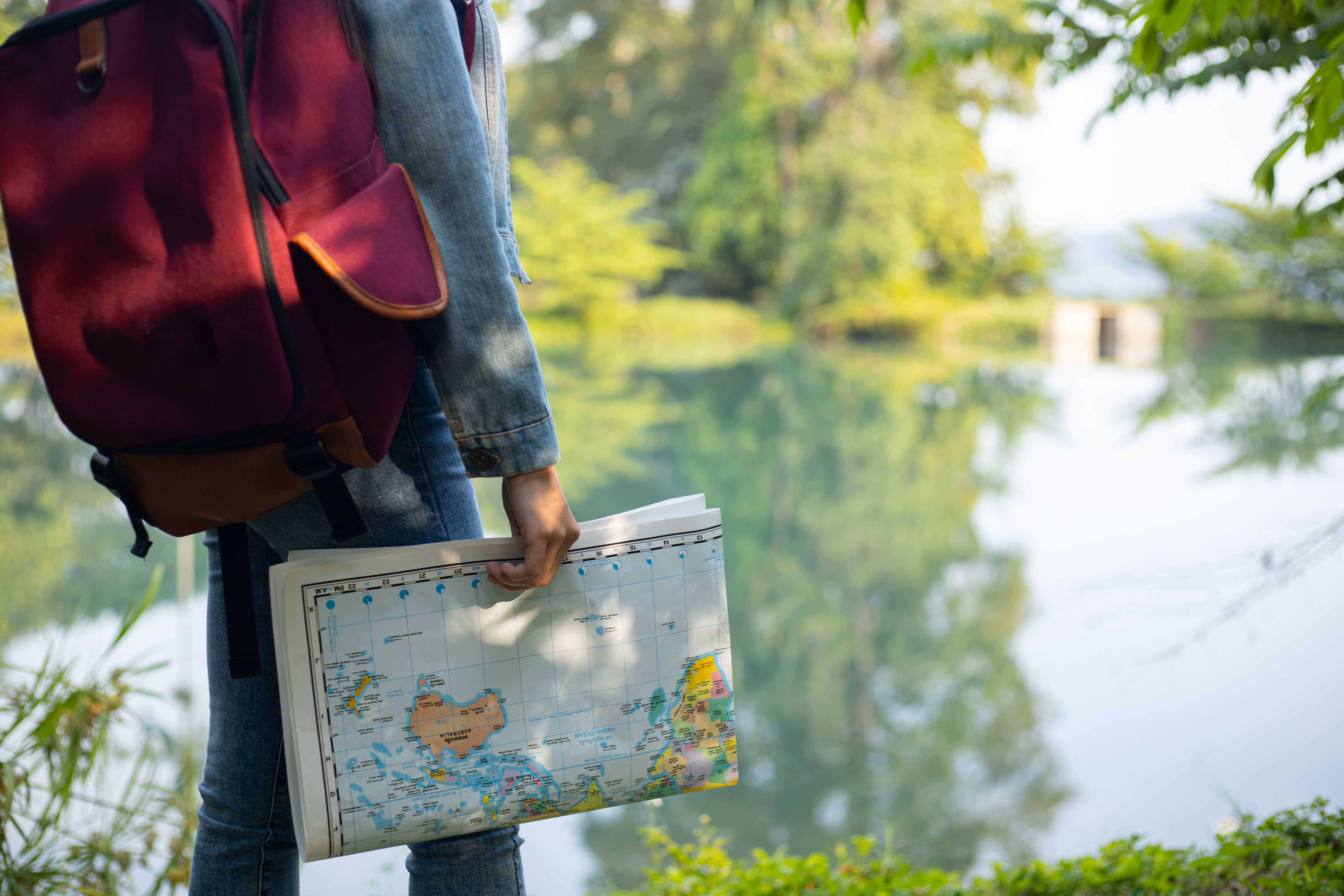The Eco-Traveler’s Guide – Tips for Green Tourism

Why Green Travel?
Green travel, also known as sustainable travel, encompasses actions taken to avoid harm to the environment by tourism and enhance the positive impacts on the environment and community. The usual travel methods have negative impacts on nature via high emission of greenhouse gases, pollution and depleting resources. It is possible to have more efficient ways of travel which will influence the environment and nature, and help save our planet by reducing the harms to habitats and local economy. Responsible tourism makes us think twice and more conscientiously about the impact that is incurred on the environment and the people of the areas that we visit.
Three main aspects of travel can be considered where we can make the right choices for green tourism. Reaching to the destination, moving around the main destination and staying there. Let us explore all of these and see what steps can be taken to make our travel fun as well as eco-friendly!!
Getting There
Transportation being a core part of tourism, let us first evaluate the various aspects of the same affecting the environment and what actions can be taken in order to reduce the same.
Reduce the Carbon Footprints Generated by Flights
The use of aircraft as a mode of transport when travelling is one of the largest contributors to the carbon footprint of a traveller. As per the published statistics, it can be stated that the flights are responsible for emitting more than 1.5 times CO2 per passenger per mile, than the other ground level transports like trains. Although it is not possible to avoid this completely, it is crucial to minimise carbon emissions as much as possible. If you have to travel by plane, consider using services to offset it. Various airlines and other independent organisations have established carbon-offset programs wherein a part of the fee paid gets infused into environmental undertaking including afforestation, adoption of clean energy, and sustainable community projects. We should sustain a balance of the carbon effect brought about by our flight.
Direct Flight, Economy Travel
Considering the burn rates for both take-off and landing are high, with less frequency, there should be fewer emissions. This means choosing a direct flight as compared to the ones with layovers can contribute more positively towards reducing the energy consumption. Moreover, when customers travel on planes, taking an economy flight ticket is more environment-friendly than the business and first-class tickets. Due to the less space requirement for the economy class seats and the same being lighter in weight, a single flight can accommodate more passengers of economy class resulting in the reduced carbon emissions.
Travel at Ground Level as Much as Possible
It is essential to move as far as possible from the ground level. This can be achieved by avoiding air travel and instead opting for ground transportation wherever possible. In general, trains and buses are better from the point of energy consumption and emissions. This can help reduce the carbon emissions by almost 1.5 times as compared to flights.
Travelling by train is yet considered to be one of the most sustainable modes of transport in the regional transportation system. They release way much less greenhouse gases per passenger kilometer than planes and taking a train is visually much more exciting and can be quite comfortable. There are many urban networks of high-speed rail transport systems in many parts of the world, which are also cost-effective and friendly to the environment.
Pack Light and Responsibly
Taking only what one requires means the load and the fuel required to move the load from one destination to the other is reduced whichever transport is used – a car, a train or an aircraft. Also, pack green items to carry with you such as the reusable water bottles, cloth/biodegradable shopping bags, and containers for toiletries. It would be wrong to count on single-use vessels and utensils, much better opt for sturdy, reusable products.
Getting Around There
Take a Walk
When you’re there at the new tourist destination, walking is the best way to get around, since it is a natural form of transportation and does not require any additional resources and provides you with the opportunity to exercise. Moreover, it gives a chance to discover locals and environment closely. Same as with parks and walking tours, the city primarily tends to cater for pedestrians focusing on construction of boulevards and other similar things.
Shared Transport
If walking is not possible, choose public transport or share a taxi ride with other people traveling on the same route. Such means of transport reduce the overall number of cars, trains, and other forms of transport, thus limiting the pollution and traffic jams. Many cities now offer bike-sharing programmes which makes it an easier and cost-effective way of moving around the city.
Staying There
Green Certified Buildings
When it comes to accommodation, always prefer hotels, hostels or guesthouses with eco-labels. These green certified buildings point to energy conservation, waste use, and water conservation practices. Such certification bodies that have been recognised globally include LEED (Leadership in Energy and Environmental Design) and Green Key.
Avoid Single-Use Plastics
Disposables are a threat because they end up in landfills and seas. Select lodgings that minimise the utilisation of such consumables and offer substitutes for the same, for example, shower gel and drinking water bottles. Try not to rely on the disposables as much as possible and carry your own reusable utensils, cups, spoons etc.
Minimal Water Consumption
The water is scarce in many places, and the prevention of wastage should be done as often as possible, especially in regions that are familiar with drought. Use less water, reuse towels and avoid asking housekeeping to change the linens each day. Most sustainability conscious hotels provide facilities that use minimal water, and guests are encouraged to conserve water.
Support Sustainable Businesses
Give preference to local businesses that give prominence to sustainability. These may include restaurants preparing food from local organic farming, outlets for selling local artwork and crafts, and guides offering a tour of environmentally sensitive sites. In a way, when you choose to buy products from these businesses, you contribute toward a healthy economy in your area.
Think Local
To avoid having to travel long distances and to boost the local economy, it is effective and efficient to base your activities of interest available locally. You may select cultural tours, nature walks, and shopping that do not involve many transfers to mention a few.
Try the Vegan Options
Animal farming is responsible for emission of greenhouse gasses to the atmosphere. If you can eat less meat and dairy products, then your negative impact on the environment will be minimised. Most places have mouth-watering vegan and vegetarian meals that are easily accessible to enable tourists to eat from the regions they are visiting. Another benefit of going vegan is that you will be able to discover new tastes and make acquaintance with different cooking cultures.
Wander the World, But Always Reflect
Sustainable travel refers to the decision-making process of choosing how to move around and support destinations while having enduring positive impacts on the environment and community. In this way, we can keep on exploring the creations of the world without being harming to their existence. Whether it is opting for a non-stop flight, bringing your own water container, or purchasing from an environment-friendly store in your neighbourhood, the actions translate to a better environment.
Eco-tourism gives you a chance to explore the places and interact with locals deeply. It comprises a call for patience, worthwhile experiences, and reverence of nature and other countries. It means as a traveller, how do we choose a place to visit next and be able to set an example and perhaps lead others to change. What are you waiting for, it’s time to begin your journey toward a more sustainable future!
While you plan for an eco-friendly trip, we can take care of your bookings in terms of long and short transfers, local transport and activities offered by local suppliers (DMCs) and green certified accommodations. Please visit the website for moonstride – a cloud-based travel technology platform with mentioned features. You may request a demo now!







